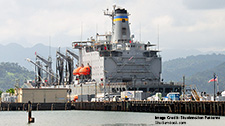Can the China-India Bilateral Gain Momentum in 2023?

Jagannath P. Panda
The Tawang incident in December 2022 was not a surprise. Both India and China have been steadily investing in border infrastructure development as their respective forces have entered into clashes with increasingly greater frequency. As both sides sought to achieve a tactical advantage, the potential for another clash was not out of question. Moreover, while India had reinforced its position in the western sector of the LAC, Arunachal Pradesh remained vulnerable.
However, the timing of the incident was certainly a surprise. That an transgression/incursion occurred days after the (admittedly brief) exchange between Prime Minister Narendra Modi and President Xi Jinping along the side lines of the G20 summit in Bali – a first since 2020. This gives a measure of the still-deteriorating trust between the countries and little chance of normalization in the coming times.
At the same time, there is little prospect of a major military escalation that pushes them into an all-out war. Rather, both states will continue to keep their armed forces on high alert, with India preparing for future infractions at critical junctures along the LAC. Additionally, India and China can both be expected to continue their substantial investments in upgrading military infrastructure along the borders, in tandem with deploying additional troops in sensitive regions.
Read this article by Jagannath Panda for The Prospect Foundation.
Related Publications
-
Not Drawing a Parallel. Ukraine and Taiwan: An Indian Perspective
Russia’s war against Ukraine has not only had economic, diplomatic, and geopolitical repercussions, but also exaggerated the fear of accelerated conflicts in the Indo-Pacific, a region with several unresolved conflicts […]
-
India-Japan-Philippines: A Strategic Maritime Trilateral or More?
Regional states like India, Japan, and the Philippines have been seeking cooperative solutions with other middle powers that can both counter the Chinese influence and fulfill other economic as well […]
-
Needed, a Framework to Protect Undersea Cables
In the data-driven world we live in, submarine cables are the arteries that connect nation-states and their people in literally every human activity, including trade, commerce, entertainment, and social interactions. […]
-
South Korea’s Indo-Pacific Strategy, Atmanirbhar Bharat, and the IPEF: Convergence and Commonality
For some time now, the existing multilateral networks such as those of the United Nations (UN) system have been largely ineffective in providing good global governance and helping create resilience, […]
-
EU-Thailand FTA Negotiations: IUU Fishing and Human Rights Remain Obstacles
Thailand’s fishing industry, which at its height saw as many as 200,000 migrant workers from neighboring Laos, Myanmar, and Cambodia caught in a brutal system of abuse, withered global criticism […]




